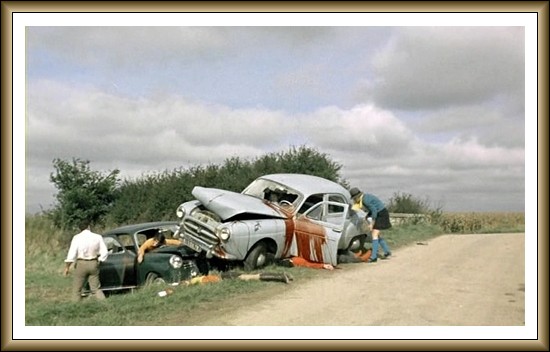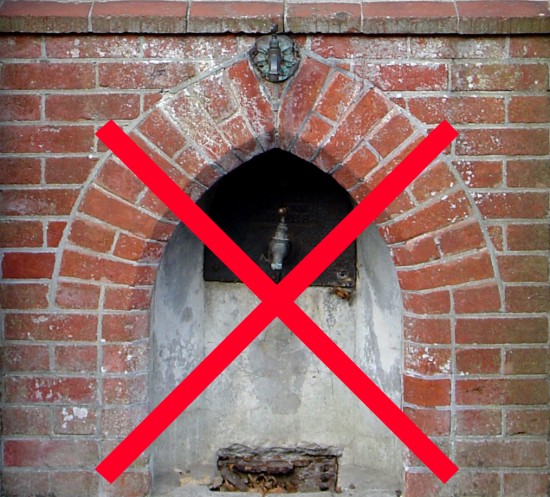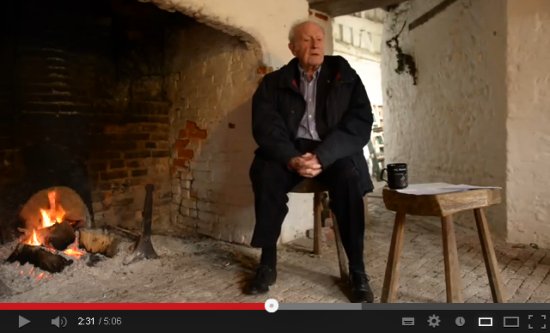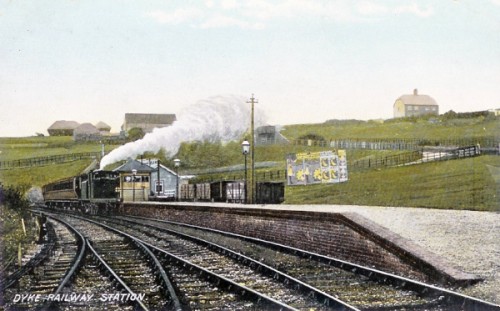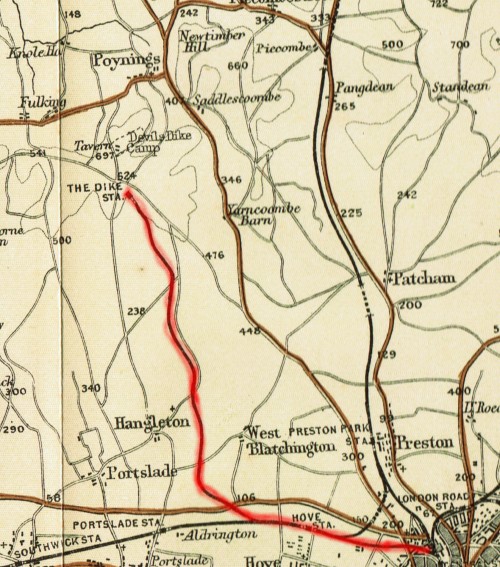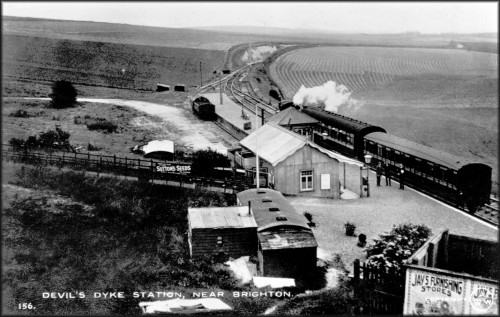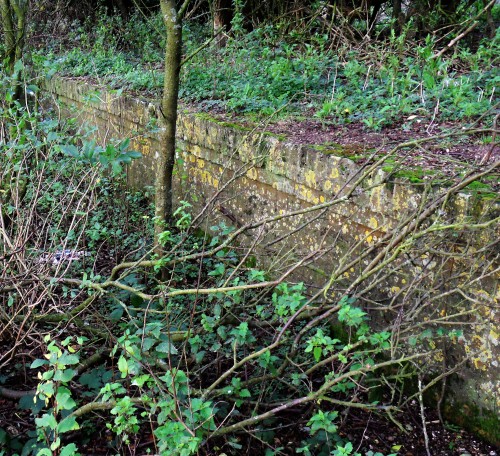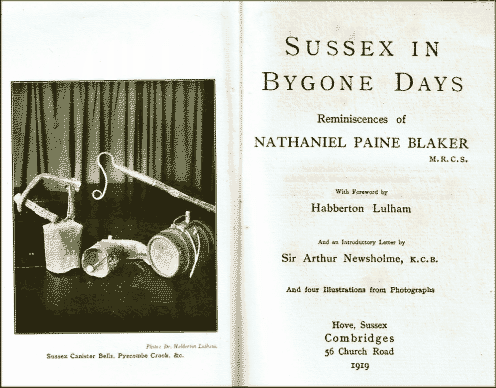Minutes of the Ordinary Meeting of Fulking Parish Council held in the Village Hall, Fulking on Thursday 9 April 2009 at 8.00pm
Present: Chairman Mrs Jenny Vaughan, Vice Chairman Mr Tony Brooks, Councillors Mr Richard Corner, Mrs Jennifer Parmar and Clerk to the Council, Mrs Paula Hazard.
Apologies for Absence: Mrs Pamela Rowland
Declarations of Interest by Members (if any) are shown against the relevant items in the minutes.
The Chairman reminded the meeting about the current arrangement regarding publication of the minutes. The trial arrangement of not reading out the minutes but posting draft minutes on the notice board and the website would continue until the next Annual Parish Meeting, at which point public opinion would be re-canvassed.
The minutes of the meeting held on 8 January 2009, as previously circulated, were approved, accepted and signed by the Chairman.
Rights of Way: DMMO 07/01 Perching Drove. A response had been received from the landowner to the PC s request to review whether a Permissive Path agreement could be put in place. The landowner cited the judge’s ruling from the Hearing which stated that the Drove had always been a private road and once the matter had been referred to the Secretary of State, the PC were not in a position to make any separate contracts or agreements. He reassured the PC that he had no intention of revoking his verbal agreement which allowed villagers continued use of the path during daylight hours and he would endeavour to ensure this informal agreement would continue if he were ever to sell his property. The PC therefore intended to let the matter rest.
Highways: The PC had reported a number of issues to WSCC Highways. These were:-
Flooding at Brook House and Hillbrook Nursery — WSCC Highways had responded that a contractor will dig a drainage grip in the west verge leading to the existing pipe running into the new culvert. This should help to clear any standing water from the causeway.
Blocked stream pipe near The Sands — WSCC Highways had responded that a contractor will clean out the sand from the ditch to allow the covered pipe to be cleaned out, which they thought should prevent surface water from flowing across the causeway.
Blocked gullies at Old Wood/Holmbush Lane junction — WSCC Highways had responded that a contractor will dig out the existing grip into the culvert at the junction to improve drainage. The damaged barrier adjacent to the culvert will also be repaired.
The PC had also written to WSCC Highways to chase up its request for a non- skid surface at the northern junction of Clappers Lane. Highways had now responded that the Accident Investigation & Prevention Section at County Hall will investigate the accident pattern at this junction with regard to any remedial measures that may be considered. The problem with the surface of the road at Clappers Lane breaking up in parts had also been reported.
The ‘Unsuitable for HGVs’ sign was in place at the northern end of Clappers Lane. The sign at the village end had not been accepted by nearby residents. These residents no longer lived in the village.
The new fittings for the streetlight at Stammers Hill had now been sourced and fitted. The streetlight outside Fulking Cottage also now had new fittings.
The streetlight in Clappers Lane had been badly damaged by a recycling truck. This had been fixed by EDF and the PC had claimed back the money for the repair from MSDC’s re cycling contractor SERCO.
A problem with tree branches breaking off at the village end of Clappers Lane had been reported. Councillor Brooks had spoken to the main landowner, however not all the land was owned by him. Councillor Brooks said he would speak to the Tree Warden to assess the condition of the trees.
Market Garden: There had been no further developments.
Preston Nomads: Councillor Brooks reported that the Club had a new Chairman. He would follow this up in the future with a view to arranging a meeting together with District Councillor Gina Field.
North Town Field: The issue of ongoing maintenance of the play area was discussed. Councillor Brooks had potentially found someone to carry this out at a reasonable cost. However, he said that it was necessary to define the tasks that needed to be carried out in order to properly assess this.
The work on the entrance to the NTF had now been completed. A grant for half the cost of the work had been received from WSCC. The outstanding amount had been covered by contributions from the Social Committee, the NTF Trust and the precept. The PC thanked the Social Committee and the NTF Trust for their generous contribution.
The PC was looking into the possibility of a permanent soft surface to replace the barkpit surface. This would save money in the long run due to the high cost of replacing the barkpit on an ongoing basis. WSCC were inviting applications for their Playbuilder fund and the PC were going to investigate whether they would qualify for any money which could cover the cost of a permanent play surface. It was thought that the grant may only be available for completely new projects. County Councillor Peter Griffiths suggested that the PC should also consider applying for funding for this from the Community Initiative Fund.
The idea of new play equipment was also discussed. A suggestion had been received from Hollie Trist about the need for new play equipment and using fund-raising (e.g. sponsored walk) for this. The PC was asked whether they would match whatever money was raised by fund-raising. Other issues would be how to choose the equipment and the problem of how it would be maintained given the current problems of on-going maintenance with the existing equipment. It was agreed that a separate meeting should be arranged with interested parties to explore these issues further.
Foster Playscapes were due to inspect the play area in April. It was a concern that they thought that the barkpit levels needed to be topped up again given that it was done recently at a cost 360. This would have been more costly had Councillor Brooks not sourced a cheaper supplier and helped out with the work. It was agreed that a meeting would be arranged to discuss the barkpit levels. Foster Playscapes confirmed that they would continue to do the monthly inspections at the same cost as the previous year.
The mowing of the North Town Field would continue to be carried out by Danny Flynn. He had confirmed that this would be at the same cost as the previous year.
Both the PC and the NTF Trust had agreed on the proposal for a legal agreement in order to avoid the cost of taking out two Public Liability Insurance policies. However, the savings could be outweighed by any legal costs. The NTF Trust had asked the PC if they knew of anyone that could help draft up a legal agreement. A possible suggestion was made and this person would be contacted.
Affordable Housing: No further information directly affecting Fulking had been received. It was noted that Fulking would fall within the South Downs National Park and that there would be stringent criteria for new development.
Community Transport: An informal poll on whether there would be enough support to reroute no 17 bus through Fulking to Brighton/Horsham had been conducted by Chris Gildersleeve. This had been done via Pigeon Post and the Website. The PC was interested in the outcome of this. Clerk to contact Chris to find out response and to offer survey to be posted on the noticeboard.
Beachdown Festival: The PC was asked to support the idea of having independent noise level monitoring of the festival. Clive Goodridge had proposed to do this and had asked for the formal and financial support of the Parish Council. The details of how this could be achieved were discussed in terms of the purpose, the location and the cost. The main purpose of the monitoring was to define a more representative Background Noise Level than the one currently being used. The Clerk would contact Susanna Kemp to find out more details about Background Noise Level . The PC agreed that the whole issue needed further investigation and discussion before deciding whether it should spend funds from the precept on this.
Councillor Corner updated the meeting about the 2009 Licensing Hearing, highlighting the commitment from the festival organisers to re-measure the Background Noise Level.
Fly-Tipping at the Bostal: Councillor Brooks advised that one of the issues surrounding installing a gate as a solution to fly-tipping had been establishing which land at the entrance area to the Bostal was public and which was private. He was currently discussing this with the landowner of the surrounding private land.
Village Plan: The PC was looking into defining a village plan. Once drafted this would be published in Pigeon Post and posted to the website for feedback from villagers.
APM: The date of the Annual Parish Meeting was 7 May. Two speakers had been arranged, one speaker from Henfield Area Response Team to talk about the defibrillator and one speaker from the National Trust.
District County Councillor Mr Peter Griffiths addressed the meeting about Education and Council Schools, Community Transport and the forthcoming County Local Committee Update meeting. He also advised that if a bridle gate were to be installed at the Bostal it must meet the legal condition of being kept unlocked.
Financial Matters: The Chairman signed off the interim audit, cheque list and cheque stubs.
AOB: The meeting was opened up for local residents to raise any issues.
The problem of overhanging tree branches particularly near the Market Garden site was raised. Councillor Brooks said he would speak to the Tree Warden to look at this area. Also the problem was raised of big tree trunks on the bank of the east side of Clappers Lane near the village end. The landowner explained that constant traffic driving up the bank was eroding the bank and exposing more of the tree trunks.
The problem of the external lighting at the Market Garden site being on all night was raised. The PC reiterated the point made at the previous meeting that if photographic evidence could be provided to the PC then this should make a more powerful case so the PC could pursue the issue again.
Two issues concerning the support of the police were raised. One was that an illegal rave had been held at Saddlescombe the previous weekend and it was queried about how the police could deal with these situations more effectively. The other issue was that a car had been broken into and the owner had not received an effective response from the police. It was suggested that these matters could be directly addressed to the Community Police Officer who would be attending the Annual Parish Meeting.
It was requested whether a more detailed financial breakdown than the Annual Return could be published. The Clerk confirmed that a more detailed financial summary that was produced as part of the Audit Commission process was available. Clerk to ask for this to be posted to the village website.
The planning decision concerning a house that had recently been extended was queried in terms of how such an extension could be passed particularly in a AONB. The planning application had been made a couple of years back and the PC advised that that they did not consider that there had been any planning criteria that could constitute grounds for objection, which was borne out by the Local Planning Authority’s decision to grant planning consent. There was also discussion about cases where final building works changed from the original plans granted consent.
Date of Next Meeting: 9 July, 8 October 2009.
The meeting closed at 9.10
[ BoilerPlate plate = “PC_Disclaimer” ]
